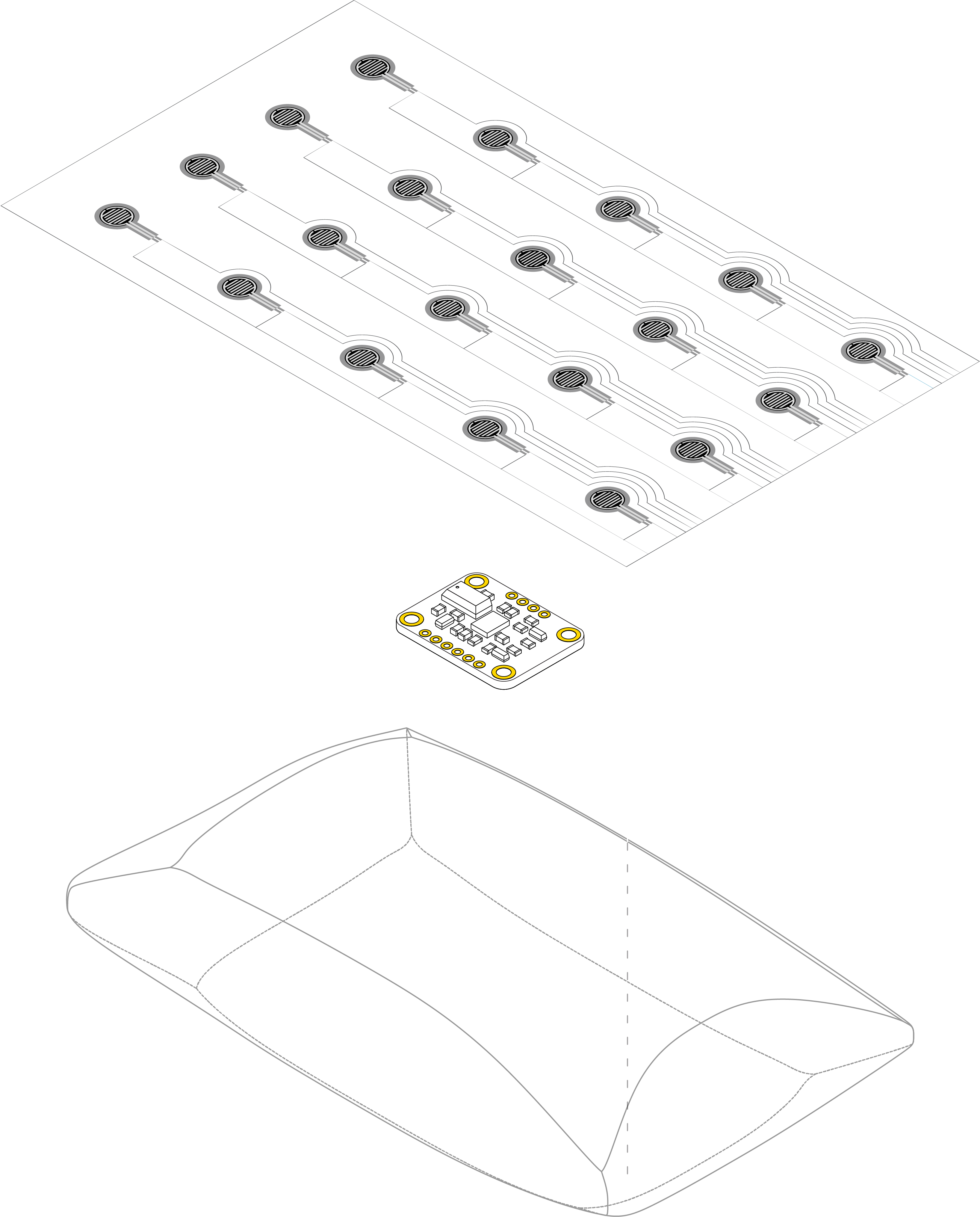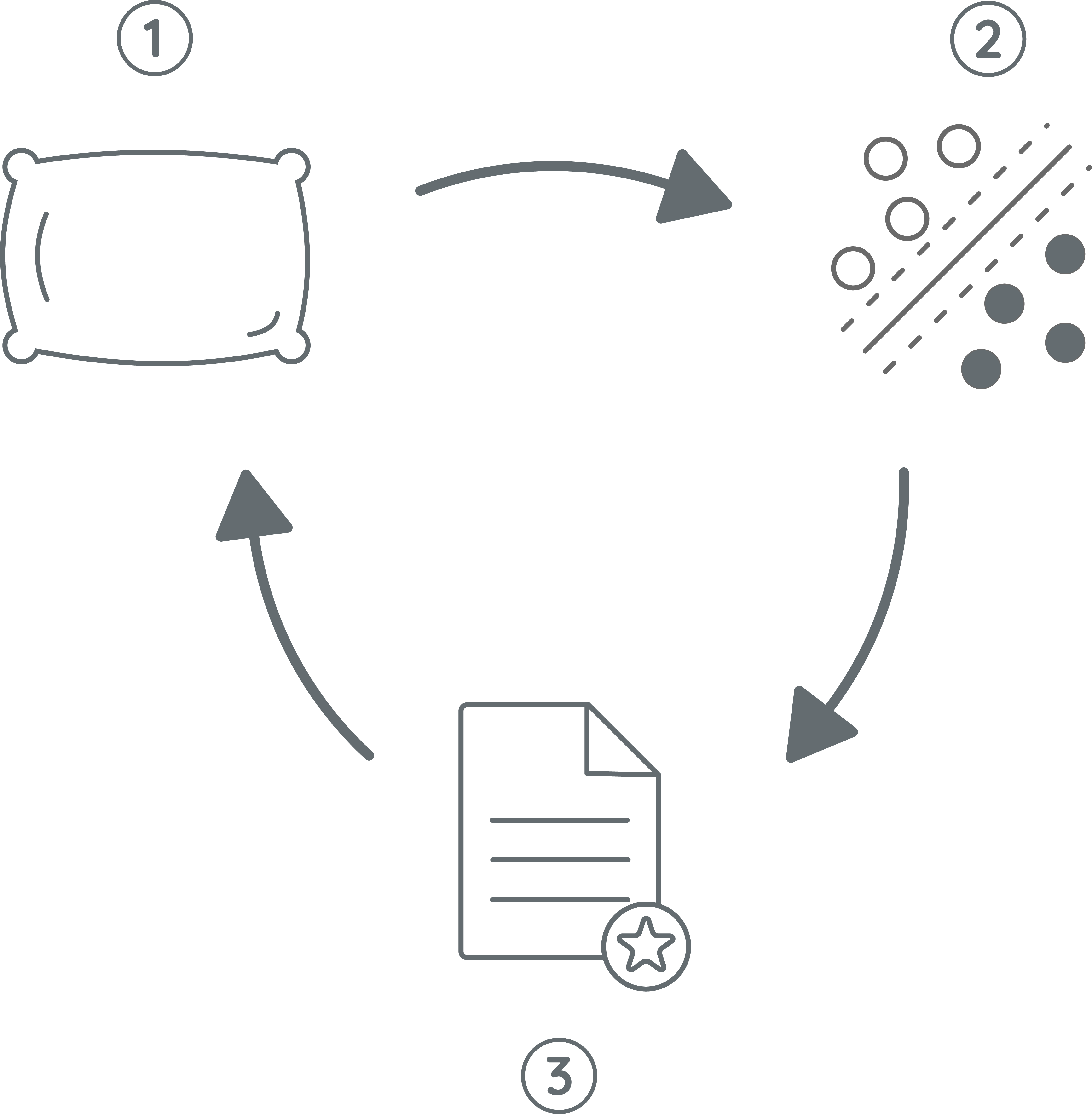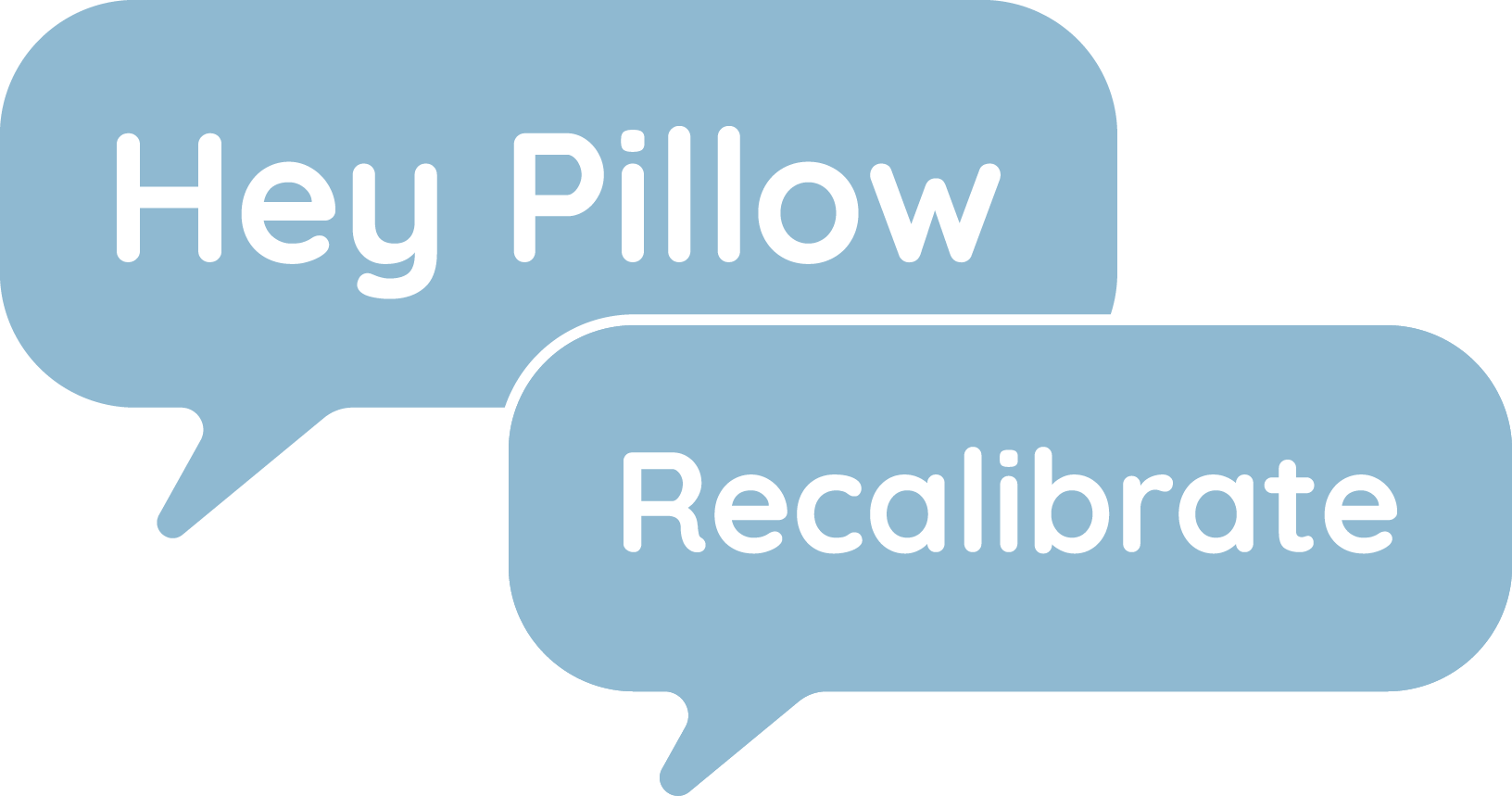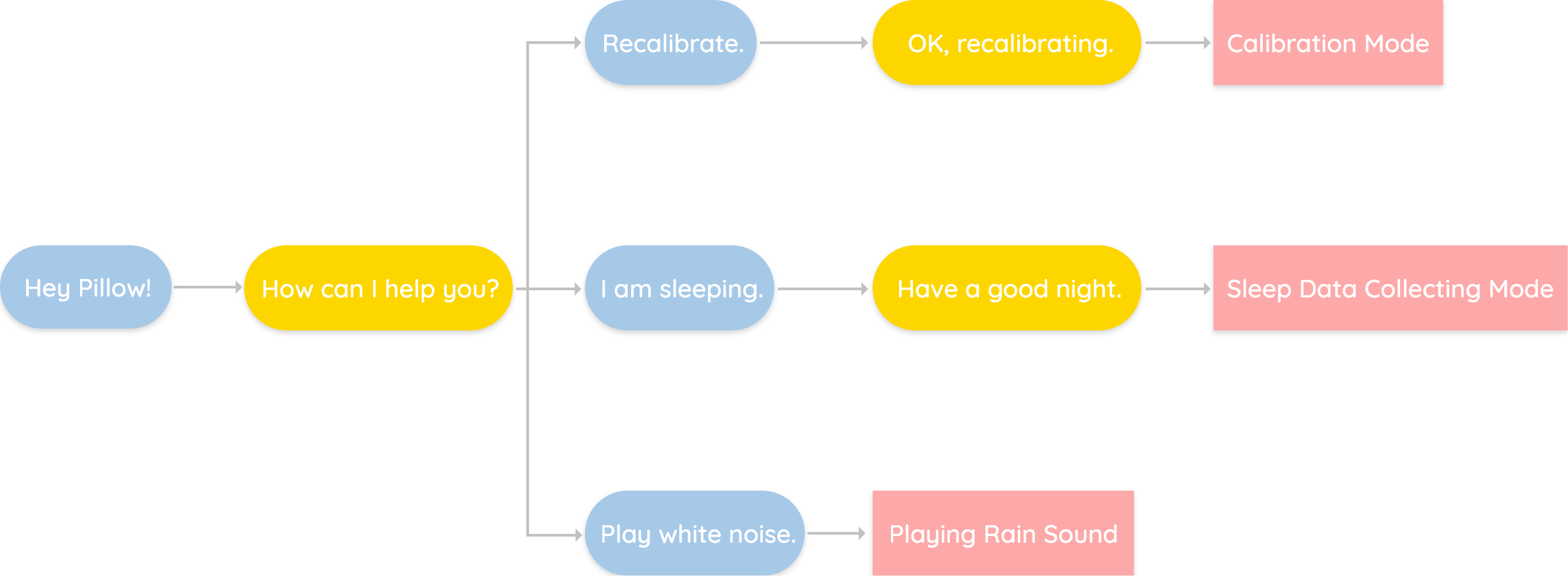
HeyPillow's sensors are composed of two parts: A 4 × 5 matrix of Force Sensitive Resistors (FSR) functioning as the pressure grid and an absolute orientation sensor combining an accelerometer and a gyroscope. This setup allows us to accurately track the user's head position and orientation on the pillow.
An Arduino Uno reads in the data captured by these sensors and then sends them to a a Raspberry Pi for processing. Voice interactions are enabled through the use of a speaker and a microphone.



